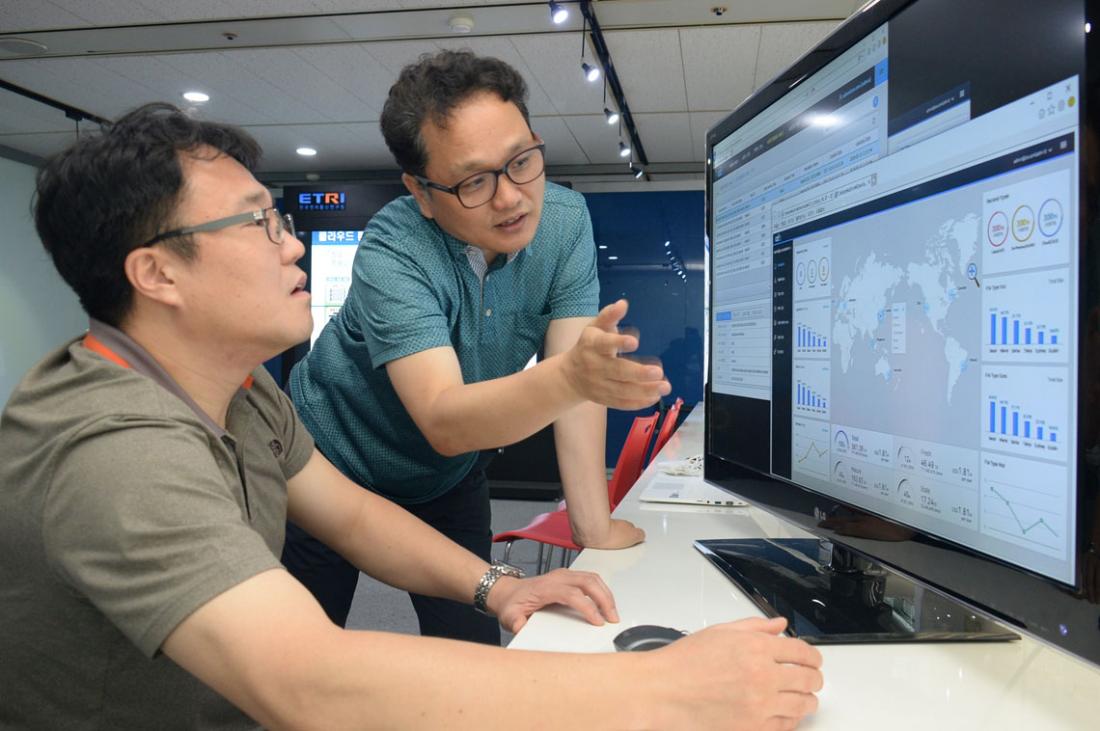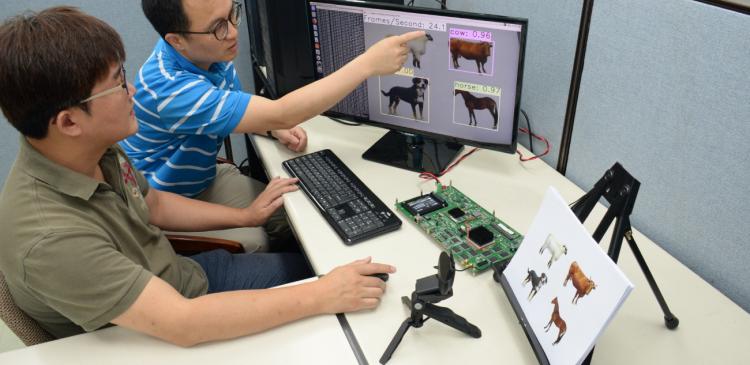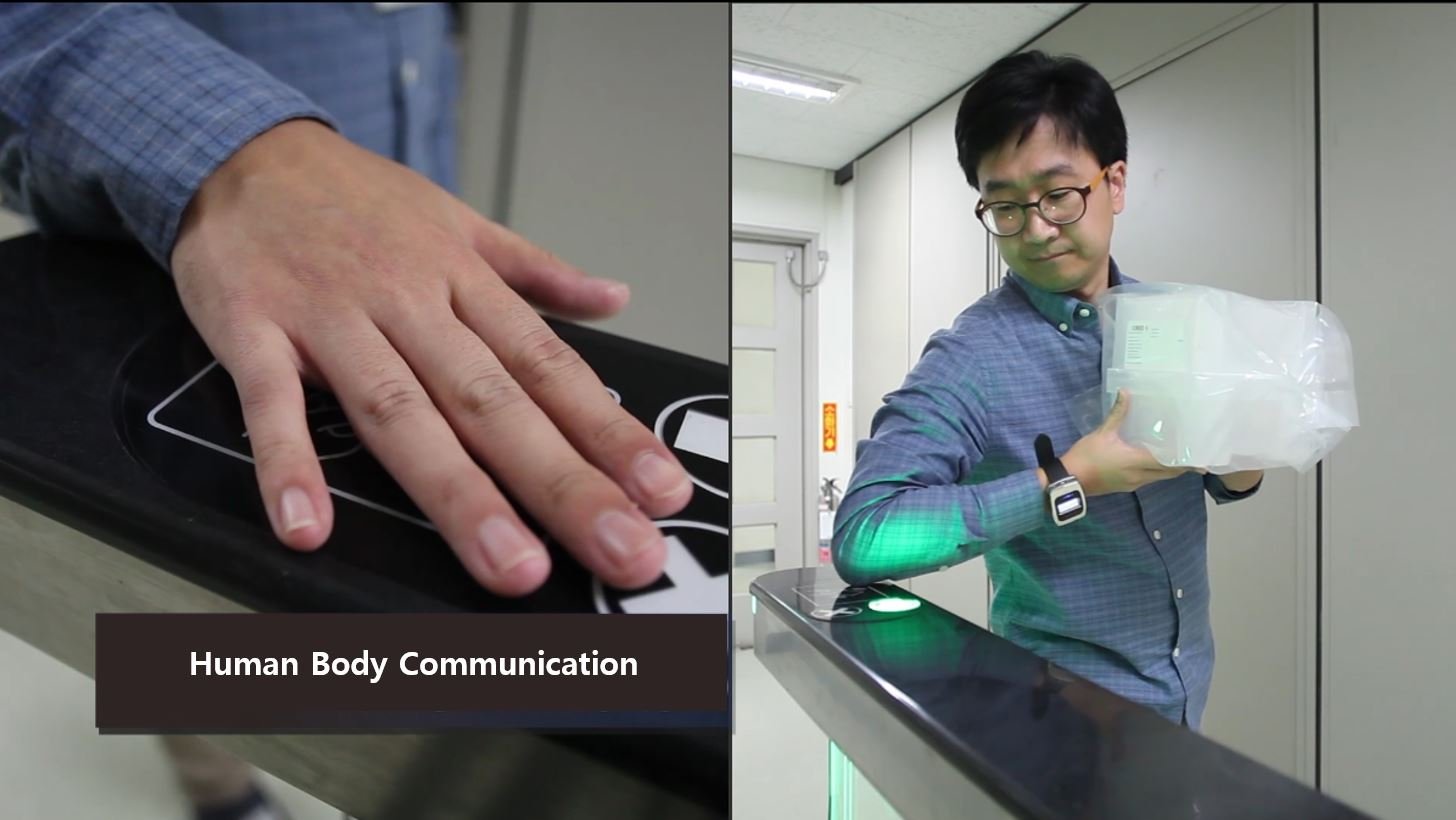ETRI researchers demonstrate how they are able to offer cloud storage 12 times faster than existing services.
Korean researchers will demonstrate how to transmit data faster than the blink of an eye at the Internationale Funkausstellung (IFA), the world’s largest trade fair for consumer electronics, taking place in Berlin, Germany from Aug. 31 to Sept. 5. High-speed cloud service, robotic vision, and harmful media dectection are also among the technological advancements that Electornic and Telecommunications Research Institute (ETRI) will showcase at IFA NEXT. ETRI will present the following five technologies during the tradeshow. 1. Faster, Bigger Cloud Storage ETRI researchers developed virtual infrastructure for secure, large-scale data storage accessed quickly whenever and wherever needed. They developed a high-speed virtual desktop that is 12 times faster than existing cloud services using computer memory, which is called ‘in-memory’. Their technology was adopted as the international standard for cloud storage services by the International Telecommunication Union Telecommunication Standardization Sector (ITU-T) in June. 2. Moving Closer to Instant Internet Researchers envision a future in which information can be transmitted in an instant. ETRI has developed a technology that sends and receives data up to 100 gigabytes per second on a 5G cellular network or WiFi, which is 10 times faster than current systems. ‘Ultra-low latency data transmission’ could be paired with augmented reality (AR) and virtual reality (VR) technologies for an even more realistic experience, as well as provide faster data transmission speed for drones or robots. 3. Robot Vision Rivals Humans A new microchip allows artificial intelligence (AI) to recognize objects to the same degree as humans. Serving as the eyes of AI, the chip is capable of recognizing objects 33 times a second. The chip can be as small as 5mm x 5mm, which is up to 100 times smaller than existing software technology. It requires very little energy, enabling various applications, such as AI robots, drones and self-driving cars. This microchip also significantly improves computational efficiency. It uses a ‘sparse-synapse operation method,’ in which data inputs with less dominant contributions are excluded before and during processing, which allows it to work much faster. 4. Detecting and Blocking Harmful Media ETRI researchers developed a program to analyze images and sound on the Internet and flag questionable content, such as videos not suitable for children. The goal is to help prevent reckless distribution, use, and spread of harmful media. It combines many technologies, including deep-learning based analysis of different types of data, including images and sound, and systems that correlate media sources with the information they provide. 5. Signal Transmission via Human Body Human Body Communication technology transmits various information, such as personal authentication, payment information, and sensor measurement via the human body. The Frequency Selective Digital Transmission (FSDT) technology transmits digital signals quickly and securely using the human body as a transmission medium. While wireless networks such as Wi-Fi are susceptible to hacking, this technology significantly reduces hacking risk and improves data security. Furthermore, unlike Bluetooth, this technology does not require users to select which devices have to connect to one another. It automatically sets the network, thus improving convenience.





